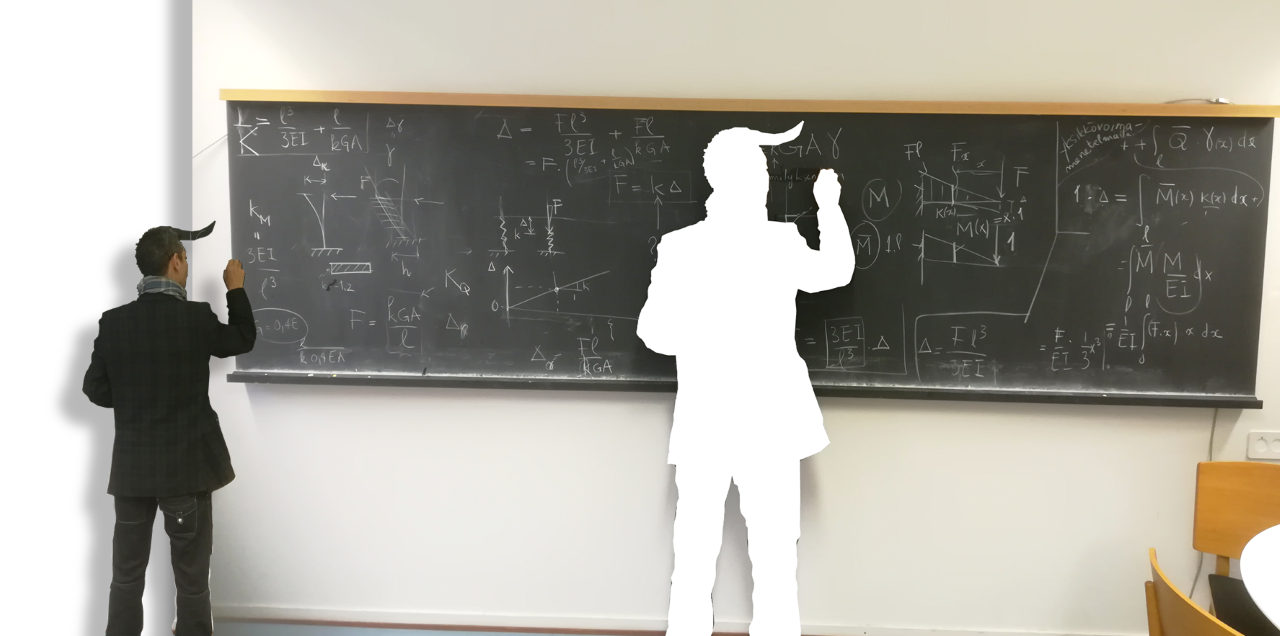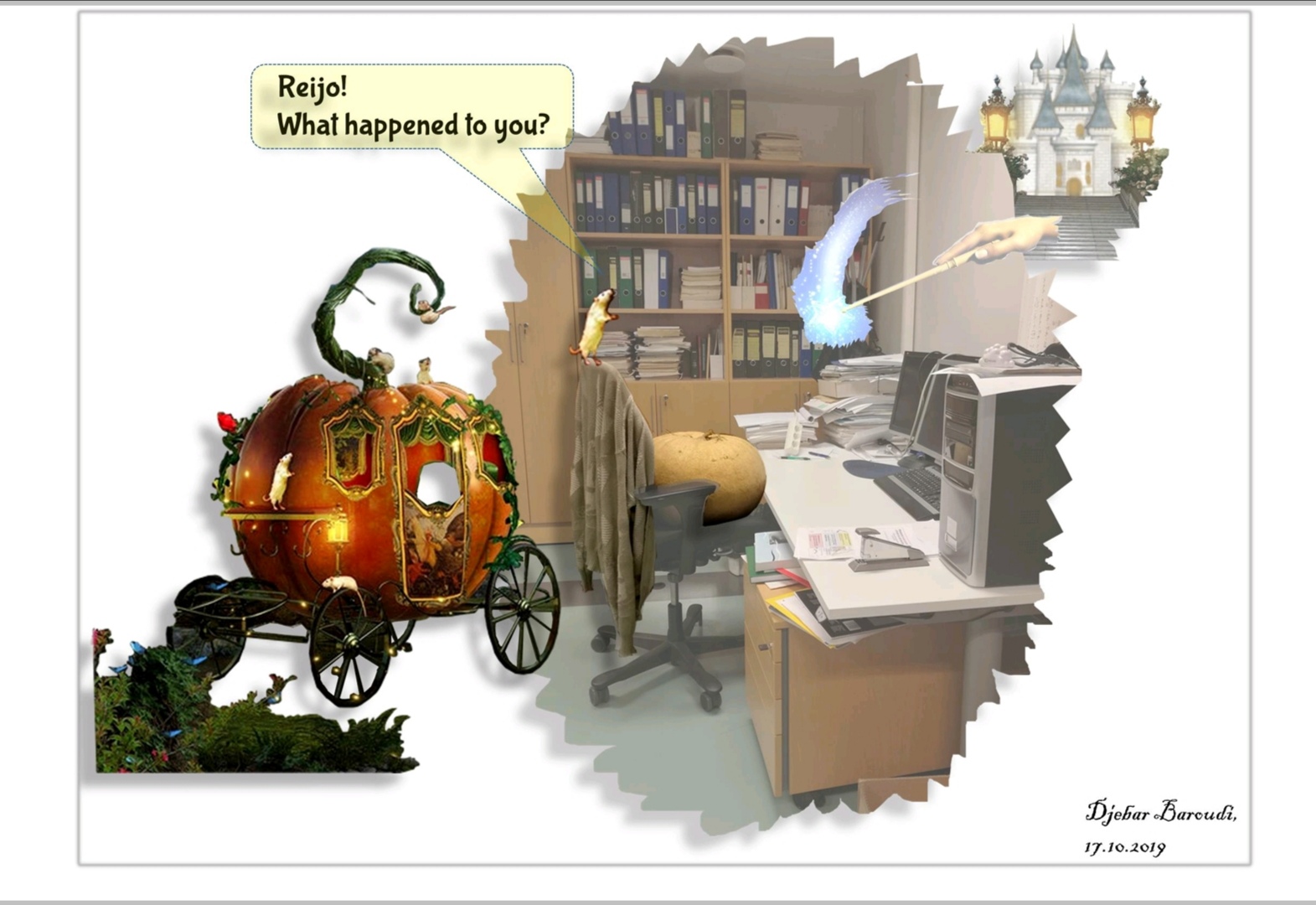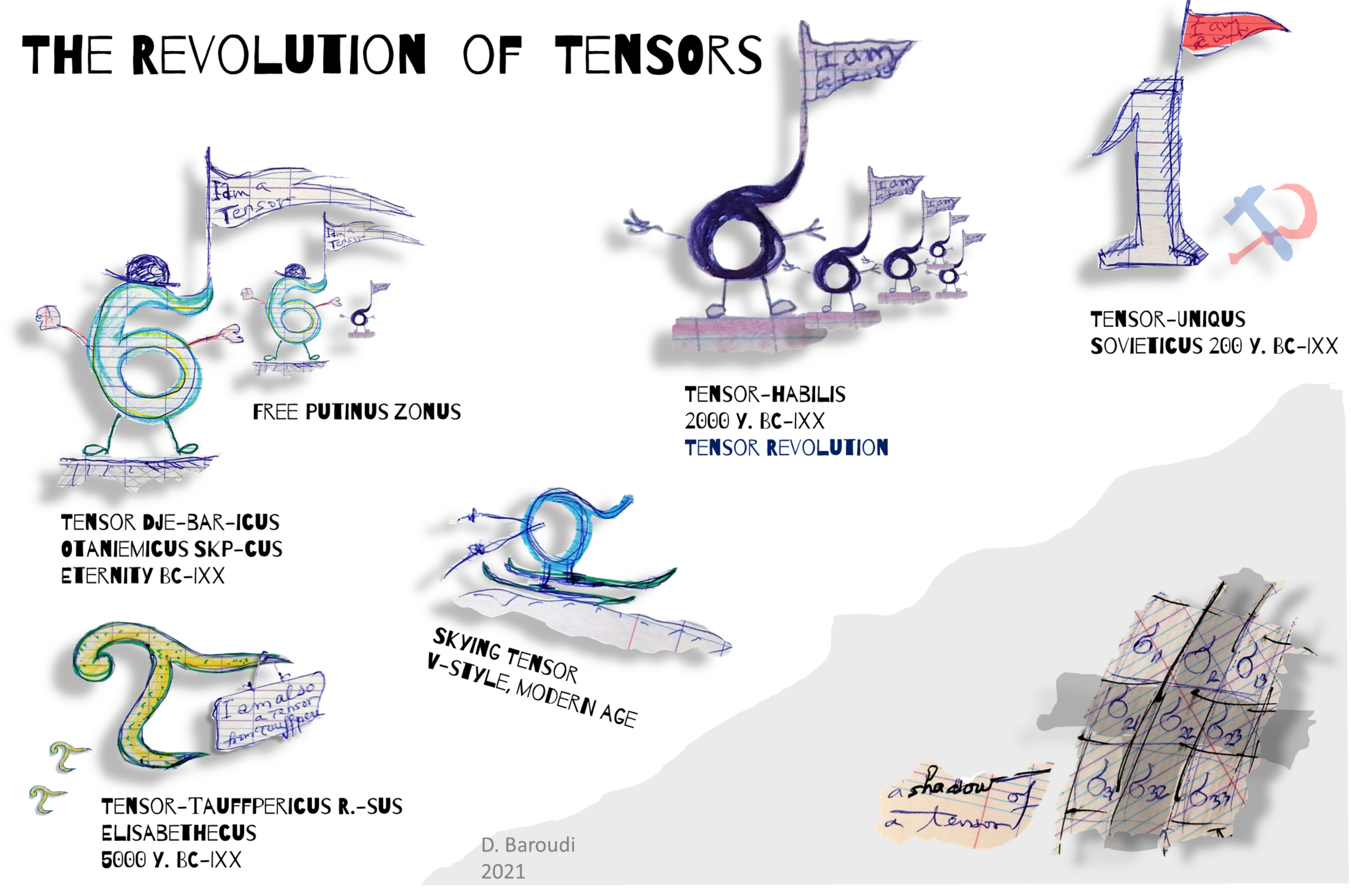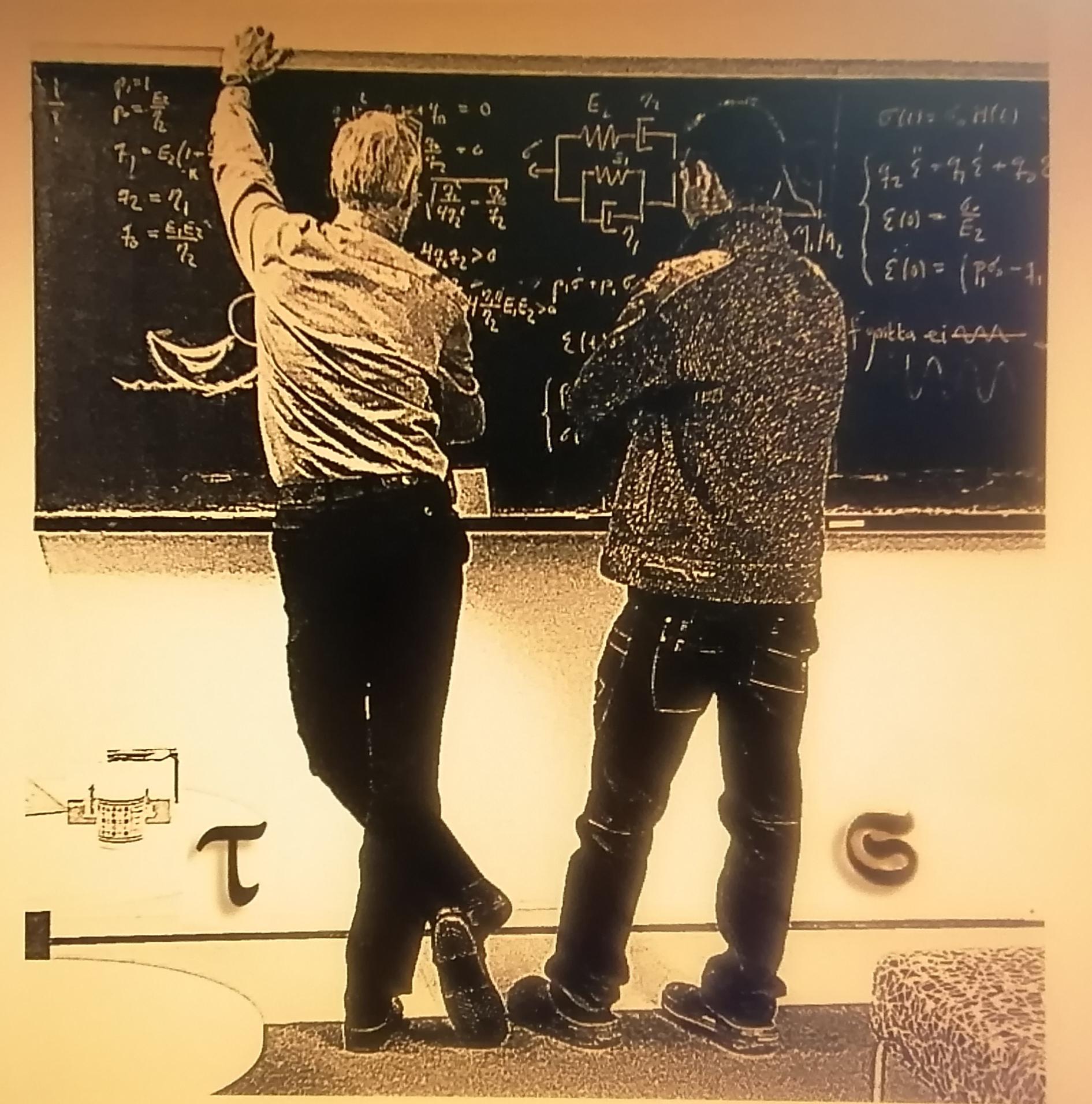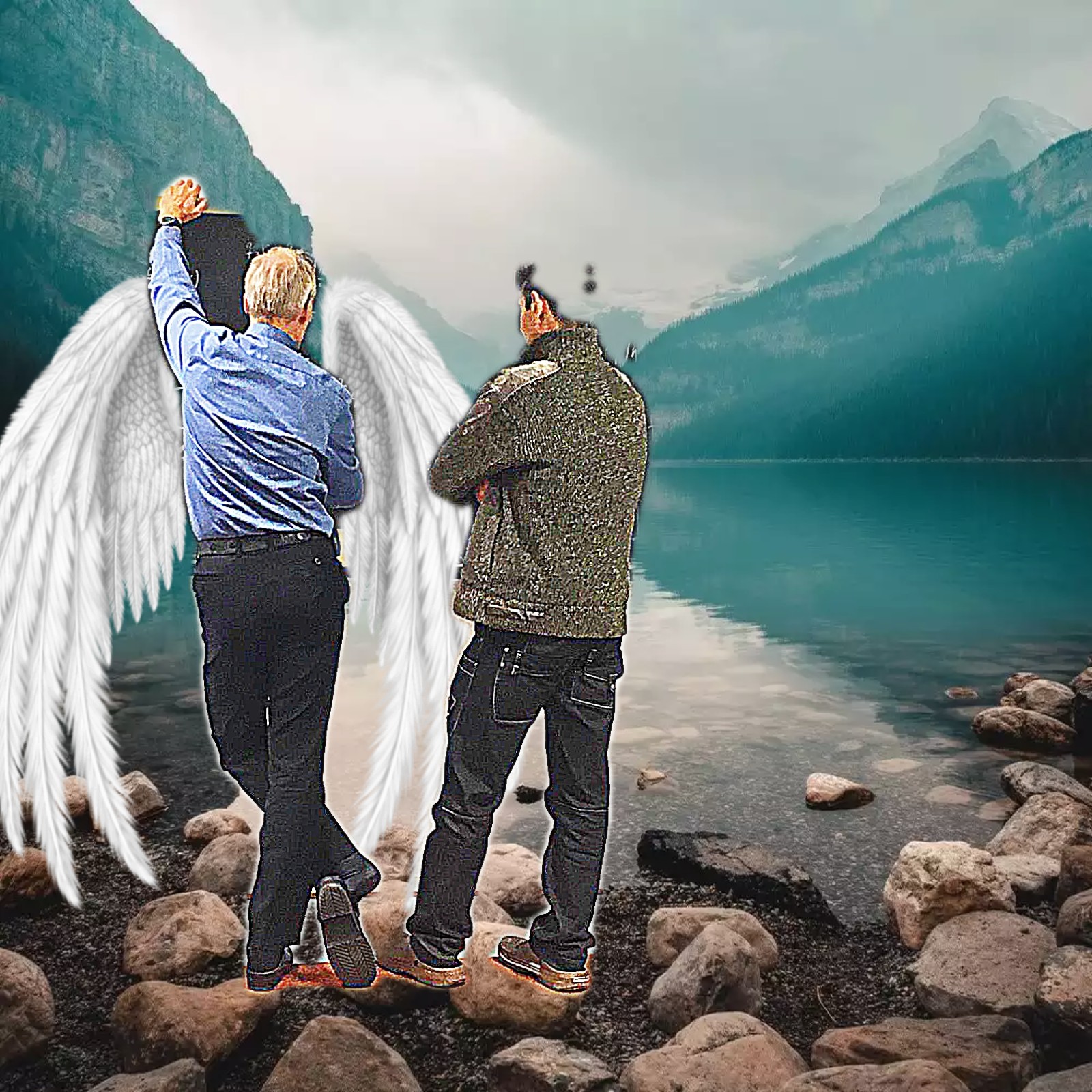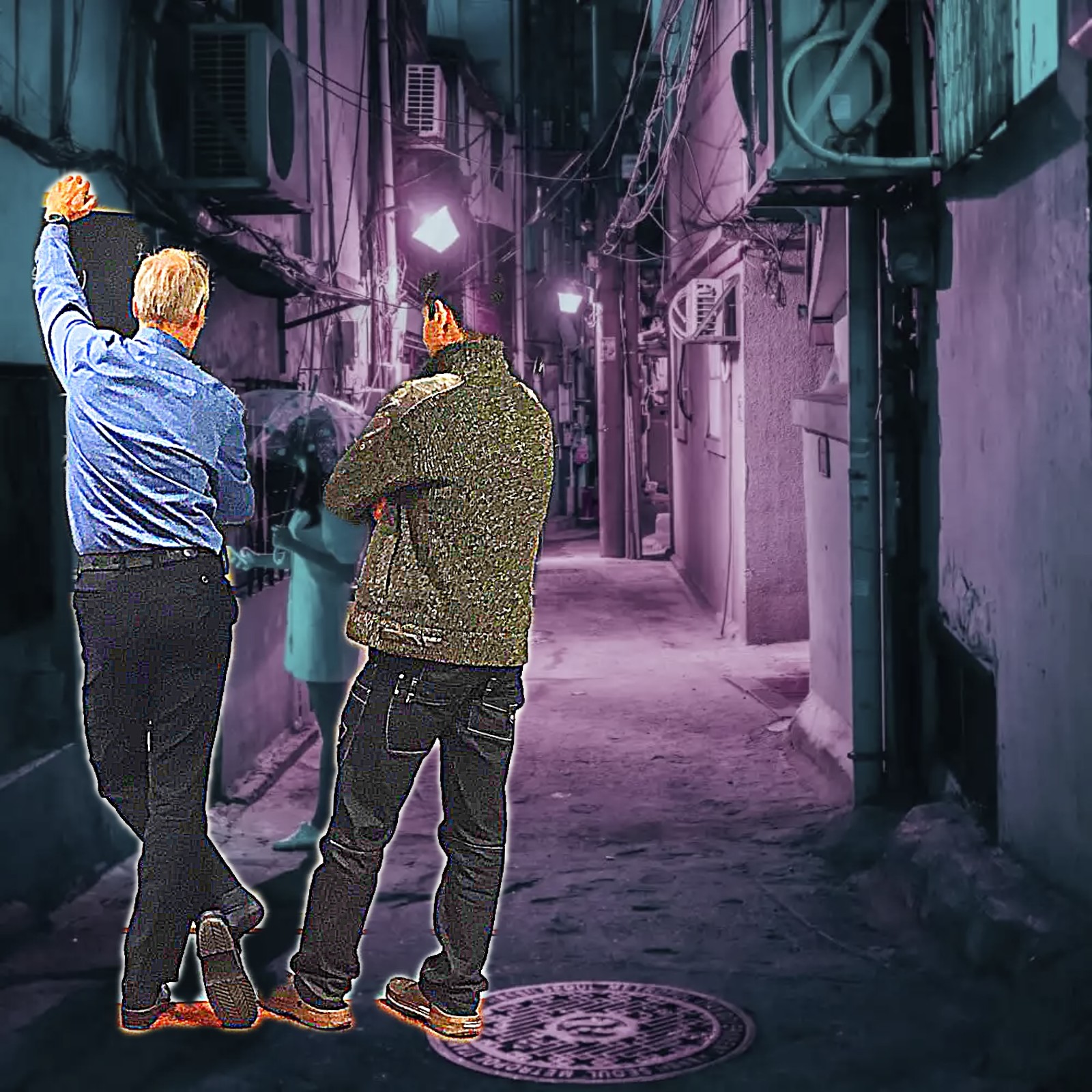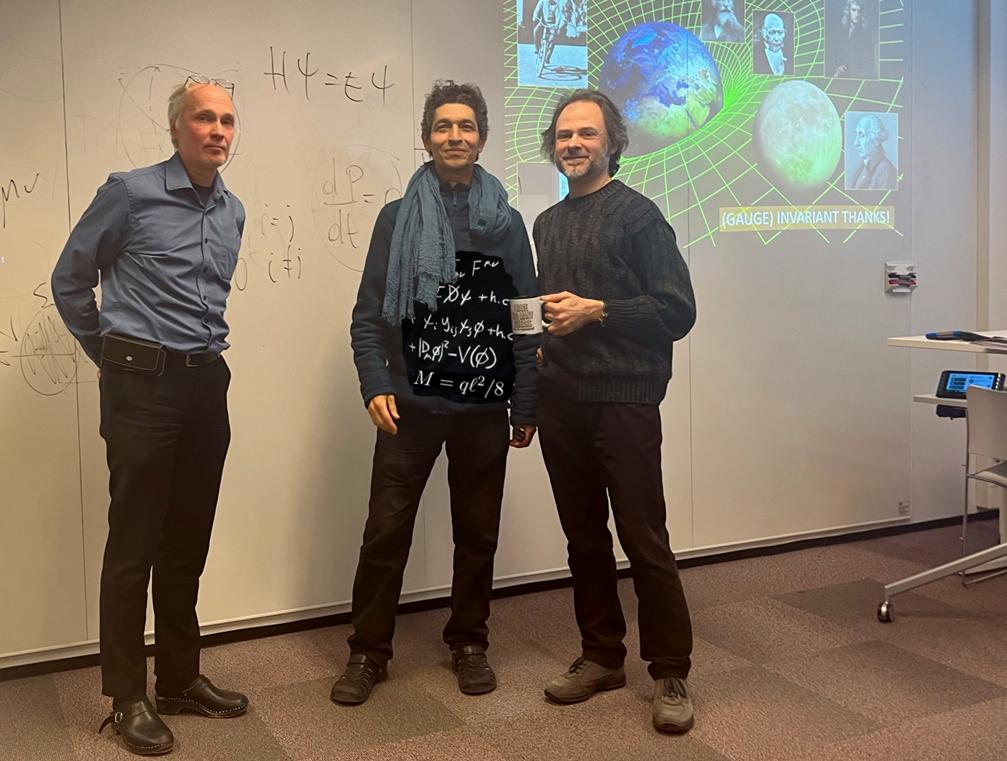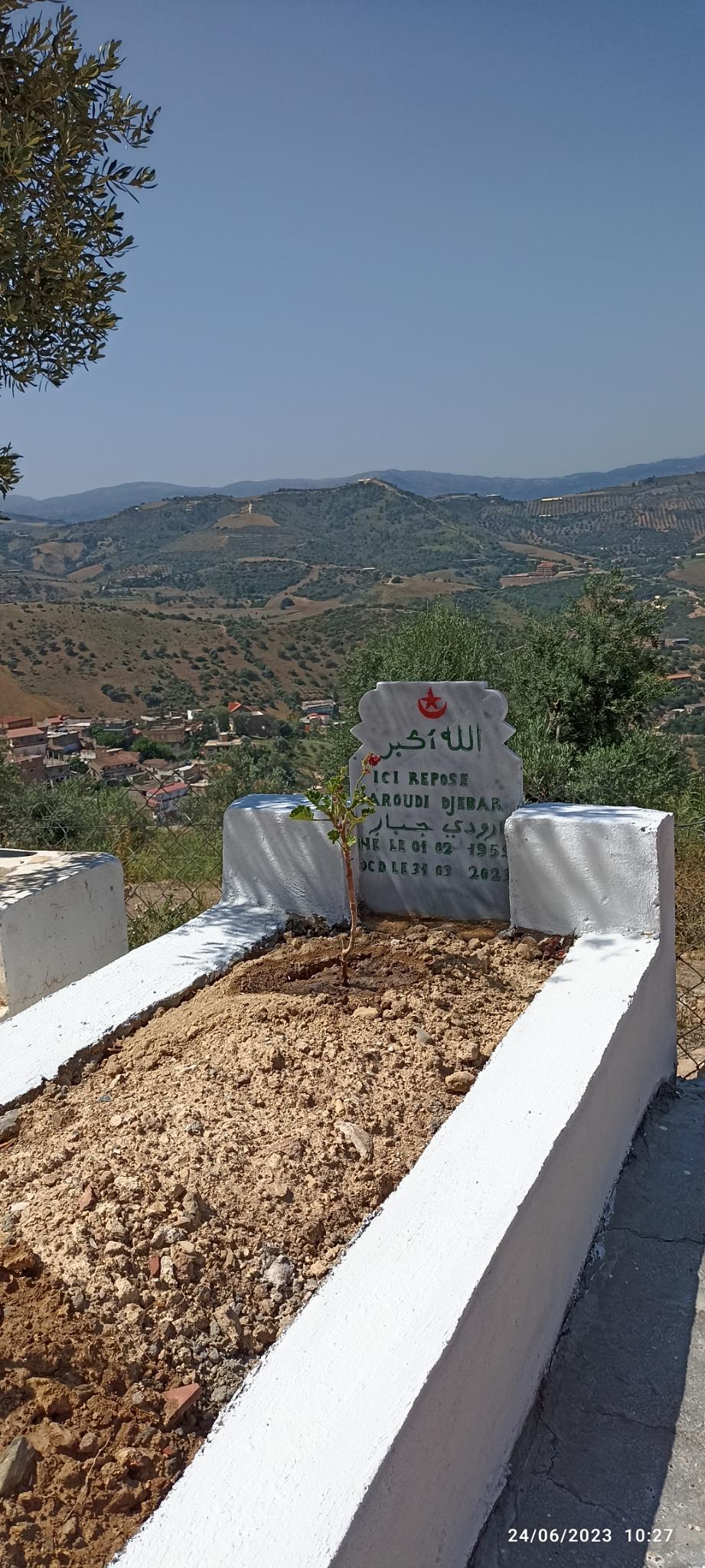Djebar Baroudi in memoriam
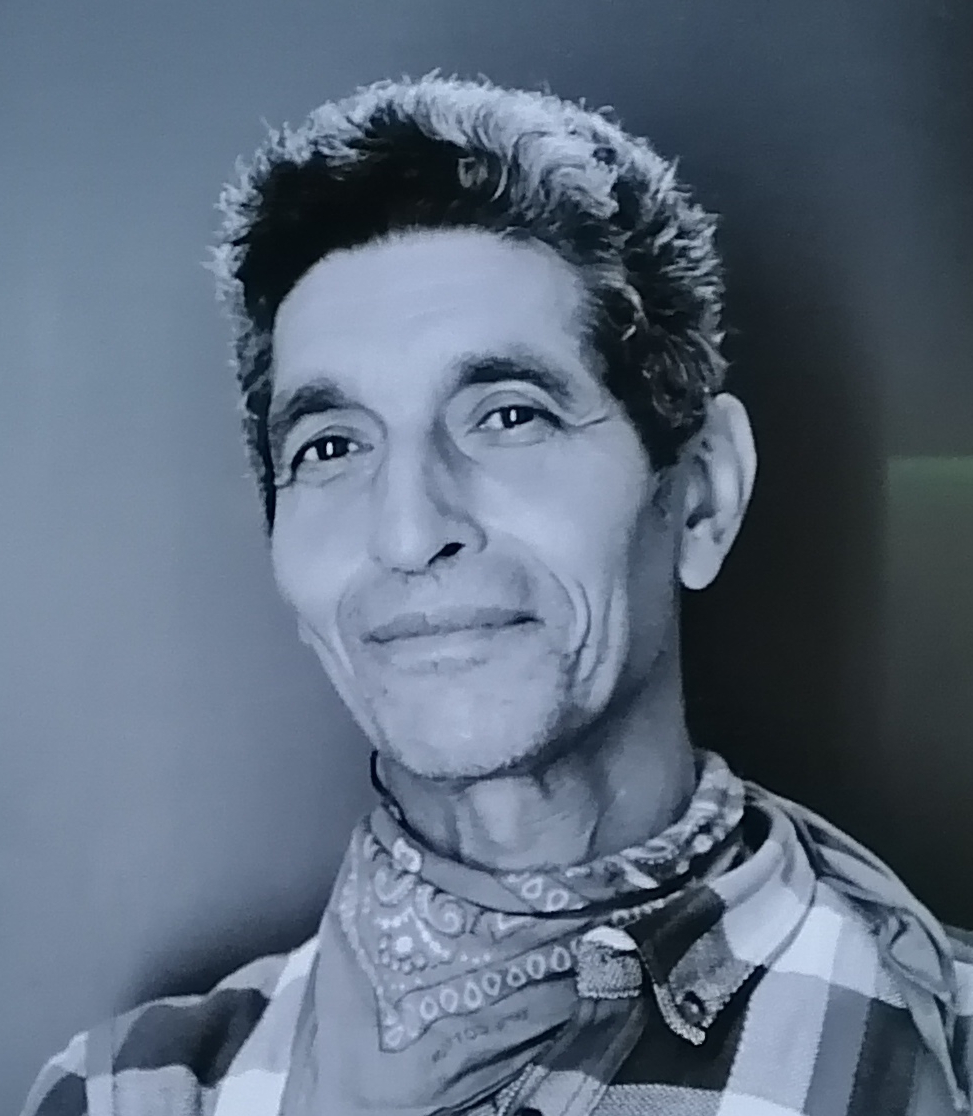
Here you can find an illustrated version of my memorial speech given at Aalto University, Department of Civil Engineering April 13, 2023.

Here you can find an illustrated version of my memorial speech given at Aalto University, Department of Civil Engineering April 13, 2023.
Dear friends, colleagues,
in this memorial talk I am going to shed light on Djebar’s life, especially on those points
which might be unknown to you, and how we met and how our lives have linked to each
other.
Djebar was born on the 1 st of February in 1959 in the Kabylia district of northern Algeria. He had eight siblings, Djebar was the second youngest.
Djebar graduated from Lycée Émir Abdelkader in Algiers in 1979. He was very proud of his school for a reason. Two of its students have received the Nobel Prize: Albert Camus for literature in 1957 and Claude Cohen-Tannoudji for physics in 1997.
He began his university studies in structural engineering in Kiev, Ukraine in 1979, which at the time was a part of the Soviet Union. There he met his future wife Sinikka, who led him to Finland in 1983. He entered the Helsinki University of Technology in 1984; and according to his own words, the entrance exam was the most difficult exam of his university studies due to his insufficient knowledge of the Finnish language at the time.I met Djebar for the first time in 1985 when he was studying the course “Structural Mechanics I” and I was an acting assistant. It was almost love at first sight. It was also immediately clear that he didn’t need any instructions or guidance in that topic from me, he mastered it already. Later I asked him why he always attended the lectures and exercises although he already knew the topic well. His answer was that he wanted to learn the language and the professional vocabulary in Finnish. I graduated in the spring of 1986 and got a position from the Academy of Finland as a research assistant. Professor Martti Mikkola then asked me if there were any skilful students who could take my position as a teaching assistant. I immediately recommended Djebar, who then as the new teaching assistant inherited those courses from me. This was the first transformation.
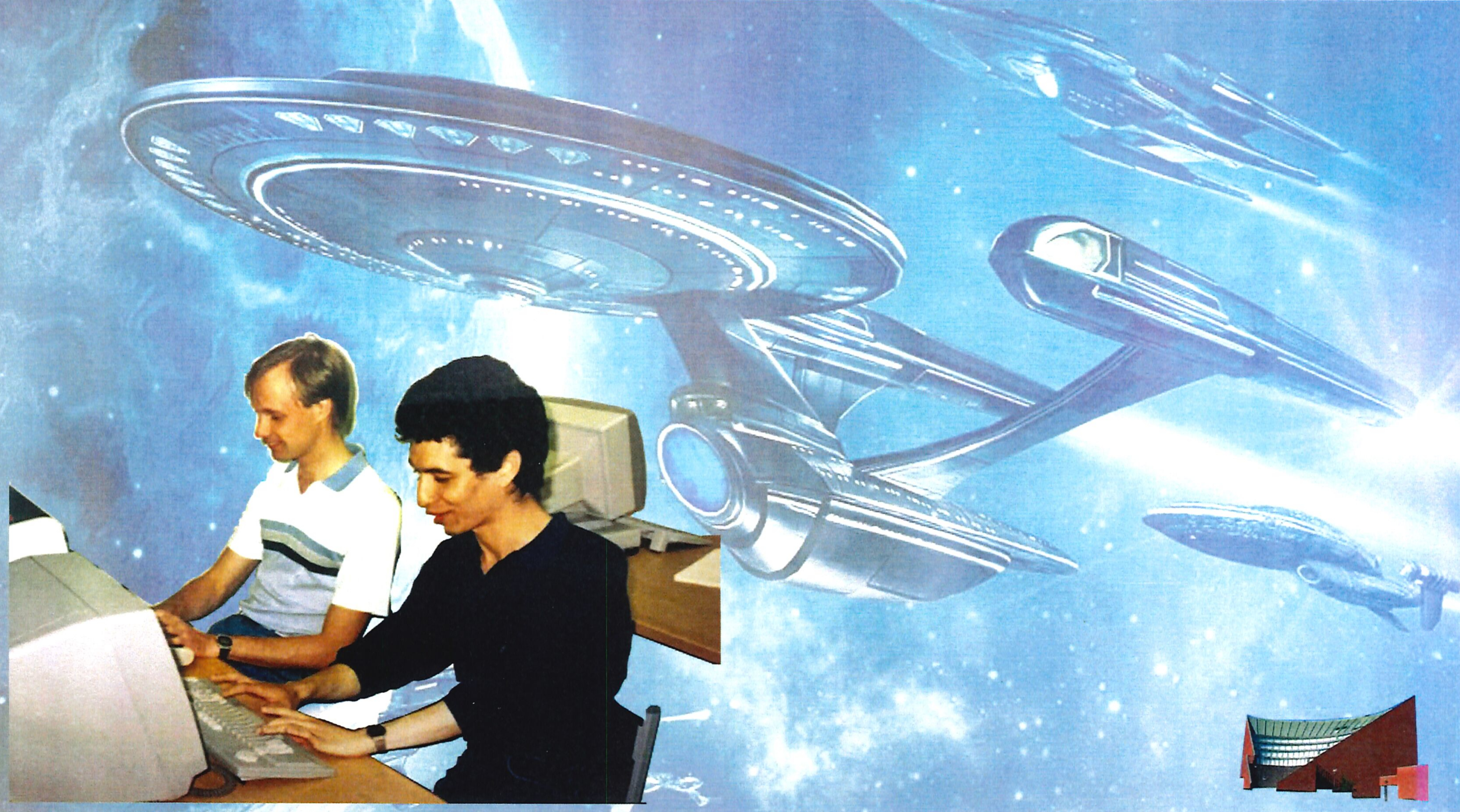
Djebar graduated as Master of Science in Engineering with the best possible grades in the spring of 1990. The topic of his thesis was “Mixed finite element analysis of solids”, in which he implemented a mixed formulation for two and three dimensional elastic body. Juha Paavola was at that time the acting professor since Martti spent that year in Paris developing a theory of freezing soil with Professor Michel Fremond at Ecole des Ponts et Chaussées. Debar obtained a 4000 FIM grant from RIL for well completed studies. Already before his graduation Djebar moved to VTT in the group of fire engineering led by research professor Matti Kokkala. the well-known Baroudi-Kokkala diagram originates from this period, from which the ignition time can be estimated as a function of the characteristic heat power. At that time Djebar was working very closely with Mr. Jukka Myllymäki. For our delight, Djebar and Jukka visited us at the university almost every day and we gave this tandem a nickname “Newton and Raphson”. During the period in the fire technology laboratory he got involved in the world of inverse problems. He also worked with two famous Finnish mathematicians: Jari Kaipio and Erkki Somersalo. At that time Kaipio was professor at University of Kuopio and Somersalo at Helsinki University of Technology.
In 2004, Djebar moved to Lyon, in France. He worked both at INSA in Lyon 2004-2008 and at CEMAGREF in Grenoble (IRSTEA). His main research topic was related to avalanches, for which he developed measurement analysis techniques and mathematical models to determine the loads on structures in the path of an avalanche.However, during his time in France, Djebar defended his doctorate at the Helsinki University of Technology in 2007 on a topic related to his research in the fire technology laboratory at VTT. For his dissertation, he received the Oskari-Vilamo foundation award for the best dissertation in the field of civil engineering.
Djebar returned to his alma mater in 2010, although its name had changed to Aalto University. Juha Paavola was a key figure to get Djebar back. Djebar put a lot of emphasis in teaching, especially in illustrating the behaviour of different structures. His lecture slides were personally artistic, and they also showed a deep understanding of the subject and its connection to a wider context.
Among the students, Djebar was well liked. He always had time to give advice and to talk, often by the blackboard in the coffee room of the Department of Civil Engineering. From the students' feedback the following words can be found: inspiring lecturer, well motivating lectures, easy to get help from the lecturer, well selected study book, etc.
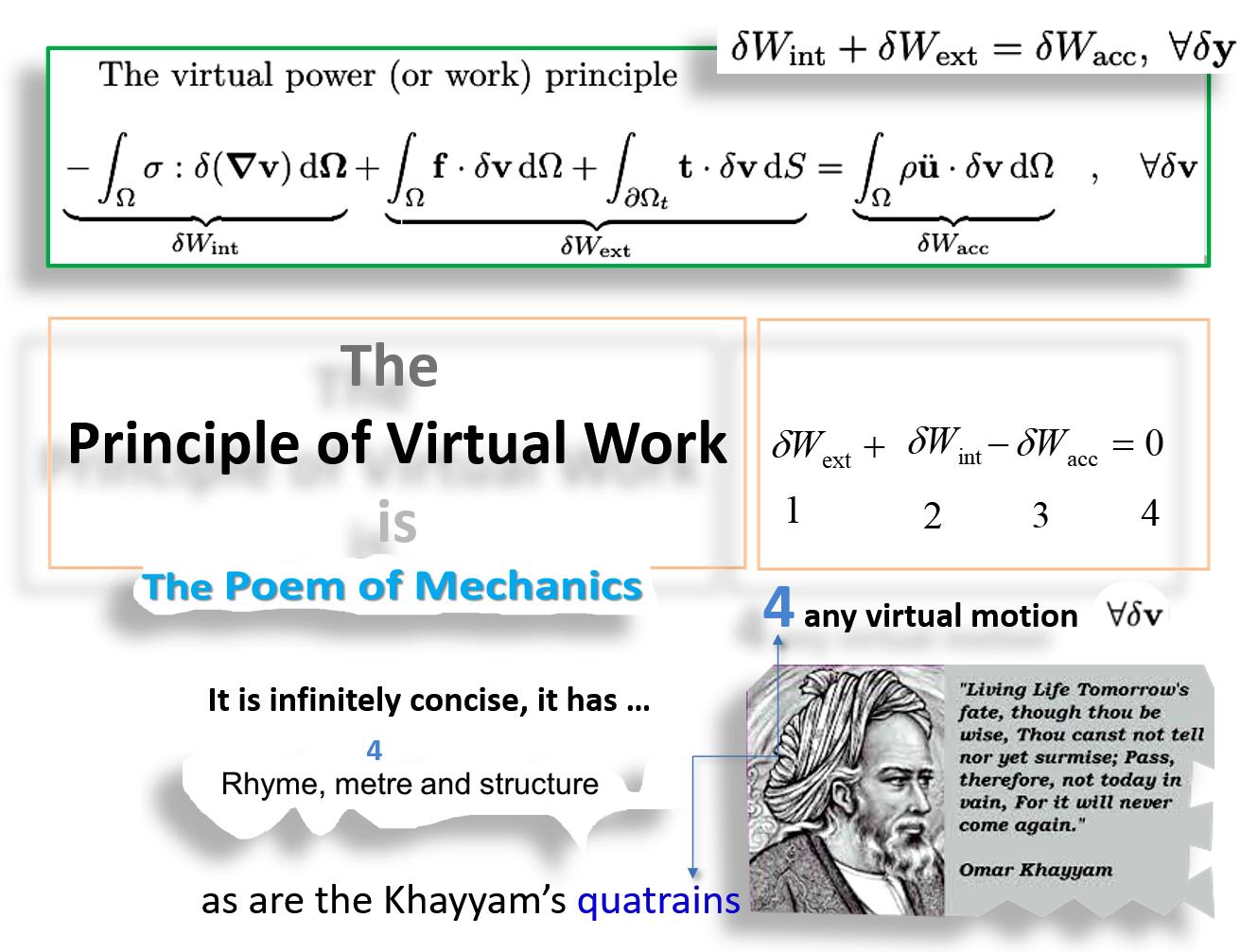
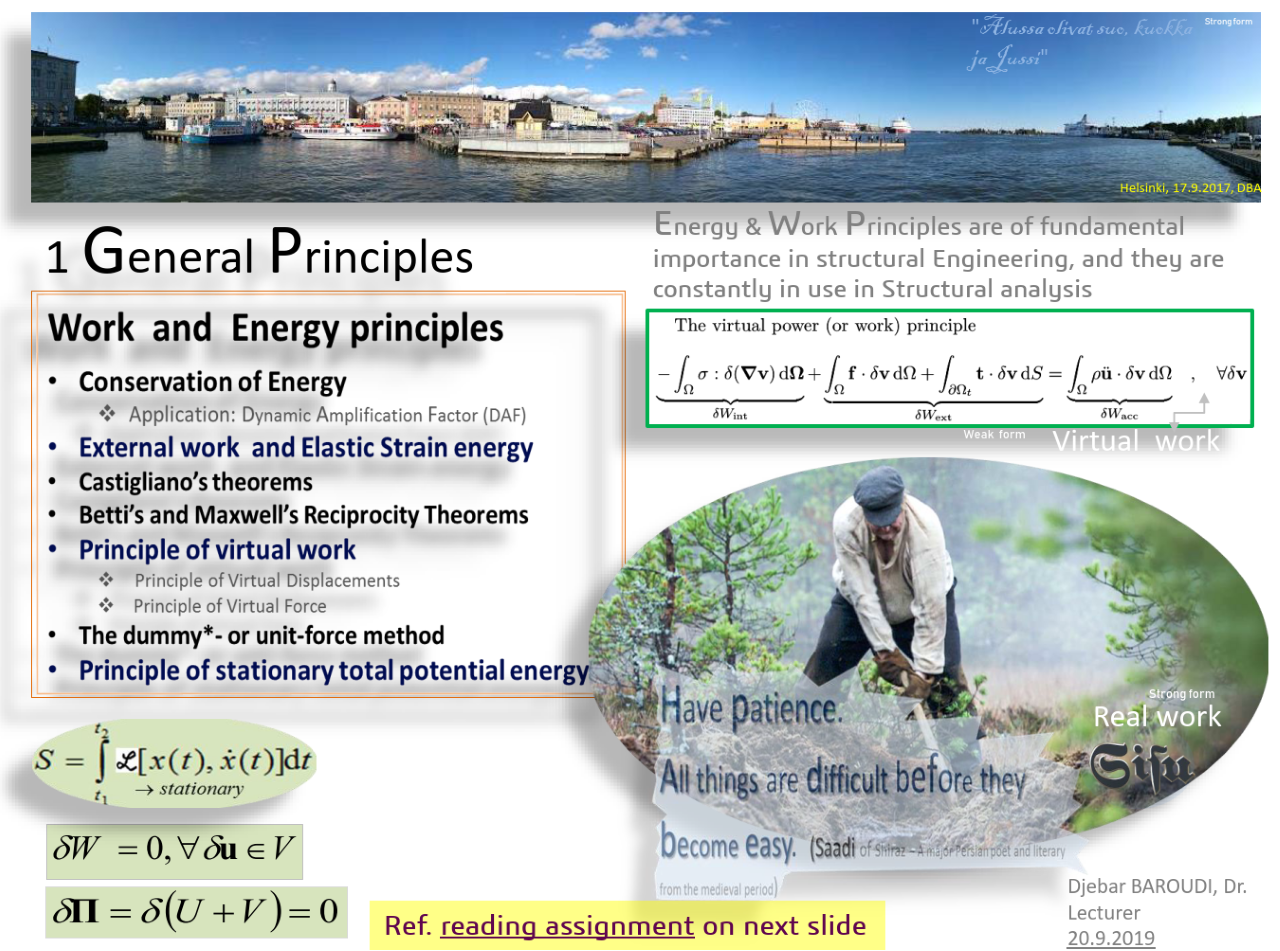
Athanasios Markou came to Aalto University in 2018. In Athanasios Djebar found a soul mate immediately. Well, I was almost jealous of Athanasios when I saw Djebar always in discussions with him whenever I met them at the department. Djebar, did you forget me – of course, it was not the case.
Before going to more personal things I am saddened that he did not get the respect he deserved in the eyes of the leaders of the School of Engineering, which he would have deserved based on his scientific qualifications which are comparable to a professor, and his dedication to teaching and to his work in general.
In addition to his strong mathematical ability, Djebar was particularly gifted linguistically. In addition to his mother tongue Kabili, he mastered Berber, French, Arabic, Russian, Finnish and of course the lingua franca in science today, English.
Djebar’s favourite sport was swimming. I can understand it being quite natural that under the hot African sun, nothing refreshes better than swimming in the Mediterranean sea. In Finland he had to settle for swimming only in swimming pools. Earlier one of his preferred sports was Karate. Djebar got a bronze medal from the Finnish Karate Federation in 2000 for merits of his work in clubs, i.e. for active participation in training and youth coaching activities.
Djebar often delighted his friends with ingenious photo collages he made. He was very visual and good at drawing. He spent a lot of time trying to illustrate the behaviour of structures to students, he made demonstration gadgets himself and amended those which were done by our previous laboratory mechanic Timo Jamalainen. During the lecturing periods he often had them at his office. His office was also full of his beautiful notes, photo collages. “What an artistic atelier” noted an architecture student who once entered his office.
We also made many excursions to art exhibitions, often in the company of Emma and Athanasios. Some of them have been of very special nature. Every summer we walked through the Laajalahti nature area to Tarvaspää, visiting Gallen-Kallela’s atelier and having some refreshments at the restaurant in the garden with a nice view towards Laajalahti. Along the walk we greeted a group of cows, taking some pictures and videos. During one of these trips when looking at the cows in the field Djebar invented a new name to Otaniemi: Mööxford. Next day we received an email from Djebar with a new photo collage: a picture of Oxford University main building and cows, one having Emma’s handbag hanging on its horn. Thus, in honour of Djebar, Aalto University should be renamed as Mööxford University in Finnish Möötaniemi yliopisto.
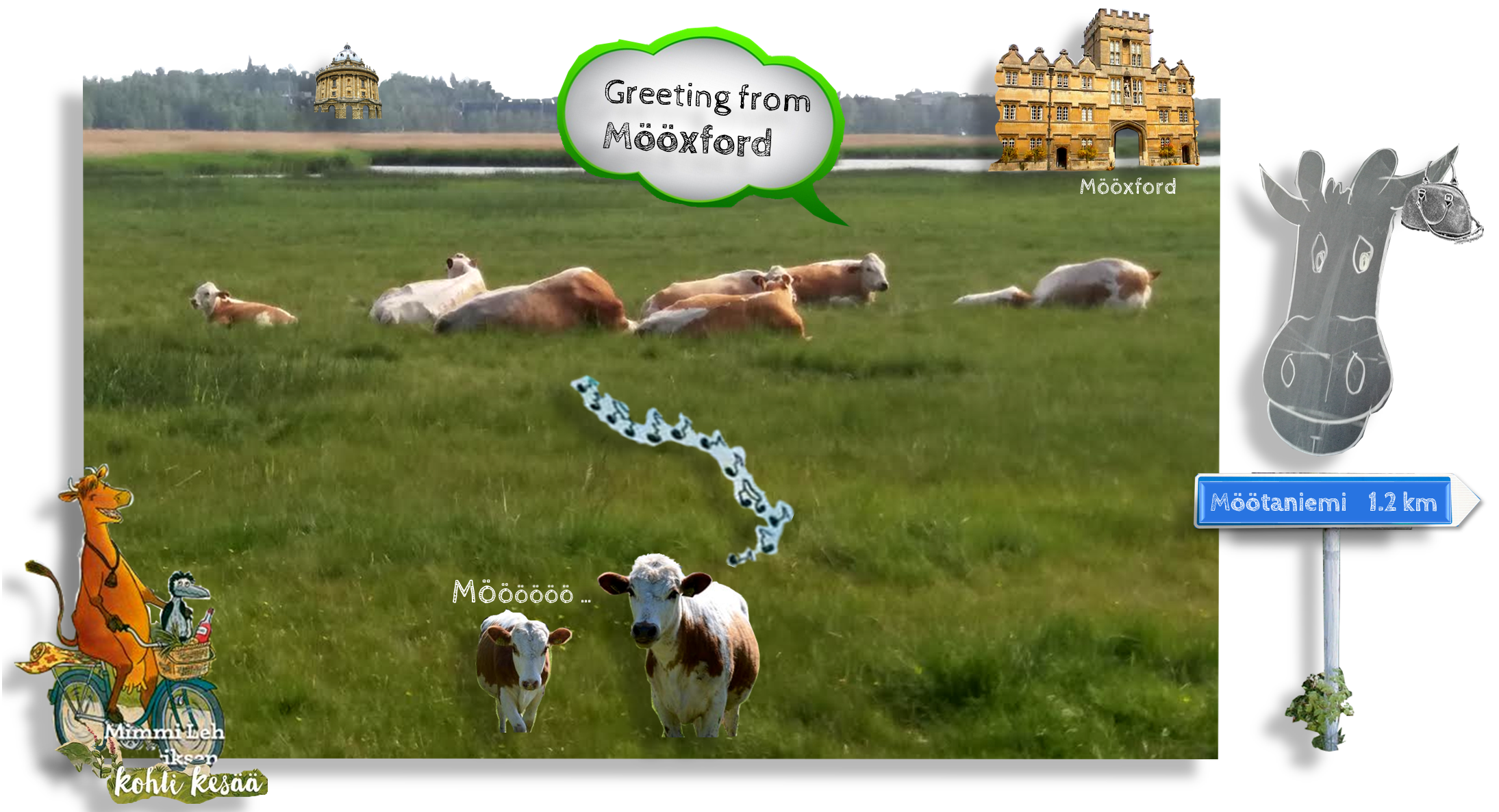
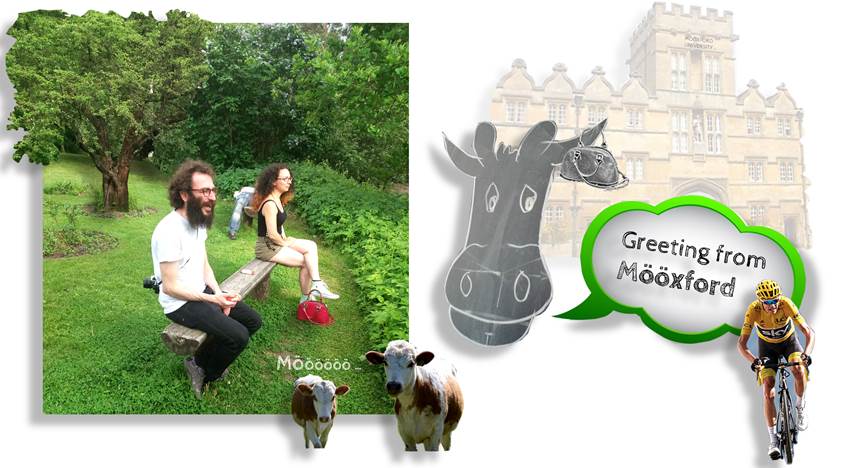

Another memorable trip was to the cultural road of Tuusula, visiting Halosenniemi, Ainola and so on. After the cultural content of our trip, having a glass of champagne at the terrace of Gustavelund, warm summer weather, sun shining, well, you can imagine that life was fantastic then.
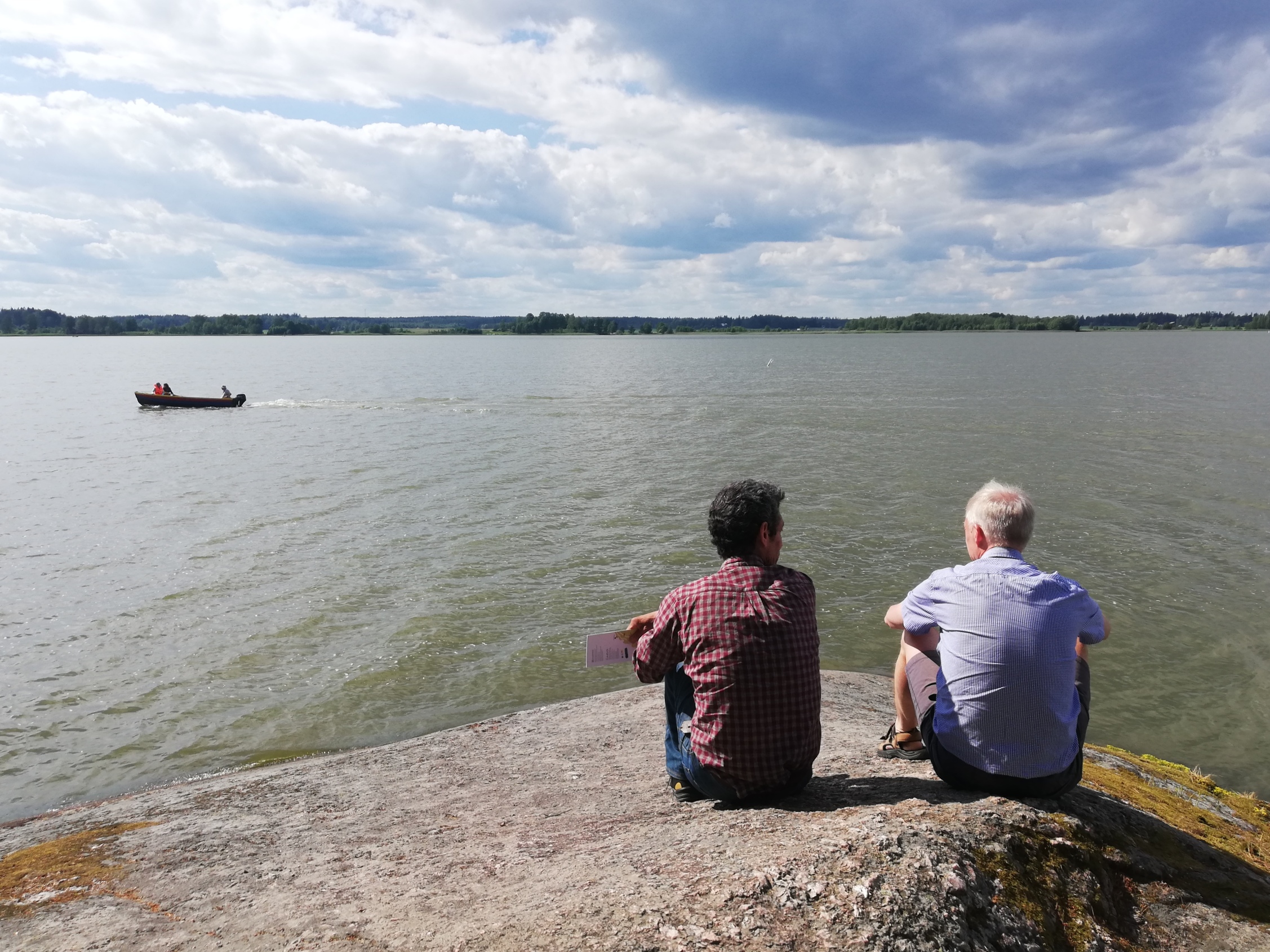
One more characteristic to Djebar was also that time does not exist for him. It is so astonishing that he was punctual with his lectures, he was never late in the classroom. But in his free time it was different. Once Juha invited mechanics people to his summer cottage. It was agreed that Djebar should come to Mööxford and Jarkko would drive him in his car. Somehow Djebar went swimming and Jarkko was waiting for him for some hours at the department before they could start. Unfortunately I was unable to participate in this event, it would be interesting to see Juha’s reaction when Djebar and Jarkko arrived.
I now have a humble suggestion to the department heads Leena and Heidi. Please, can you commemorate Djebar by ordering a plate which should be placed on the top frame of the blackboard in the department’s coffee room. I also hope that you young researchers respect Djebar’s legacy by using the blackboard often, since in Djebar’s opinion, and also mine, discussing scientific matters beside a blackboard with a piece of chalk on hand is the best environment to change ideas and develop new theories and models.
A blackboard can also be a place of having fun. We were once discussing how badly
students nowadays write Greek letters. Then we got an idea that we can write better
Greek alphabets having a piece of chalk between our toes. Well, it succeeded, and I think
our letters by toes are better than the average student can produce by hand.
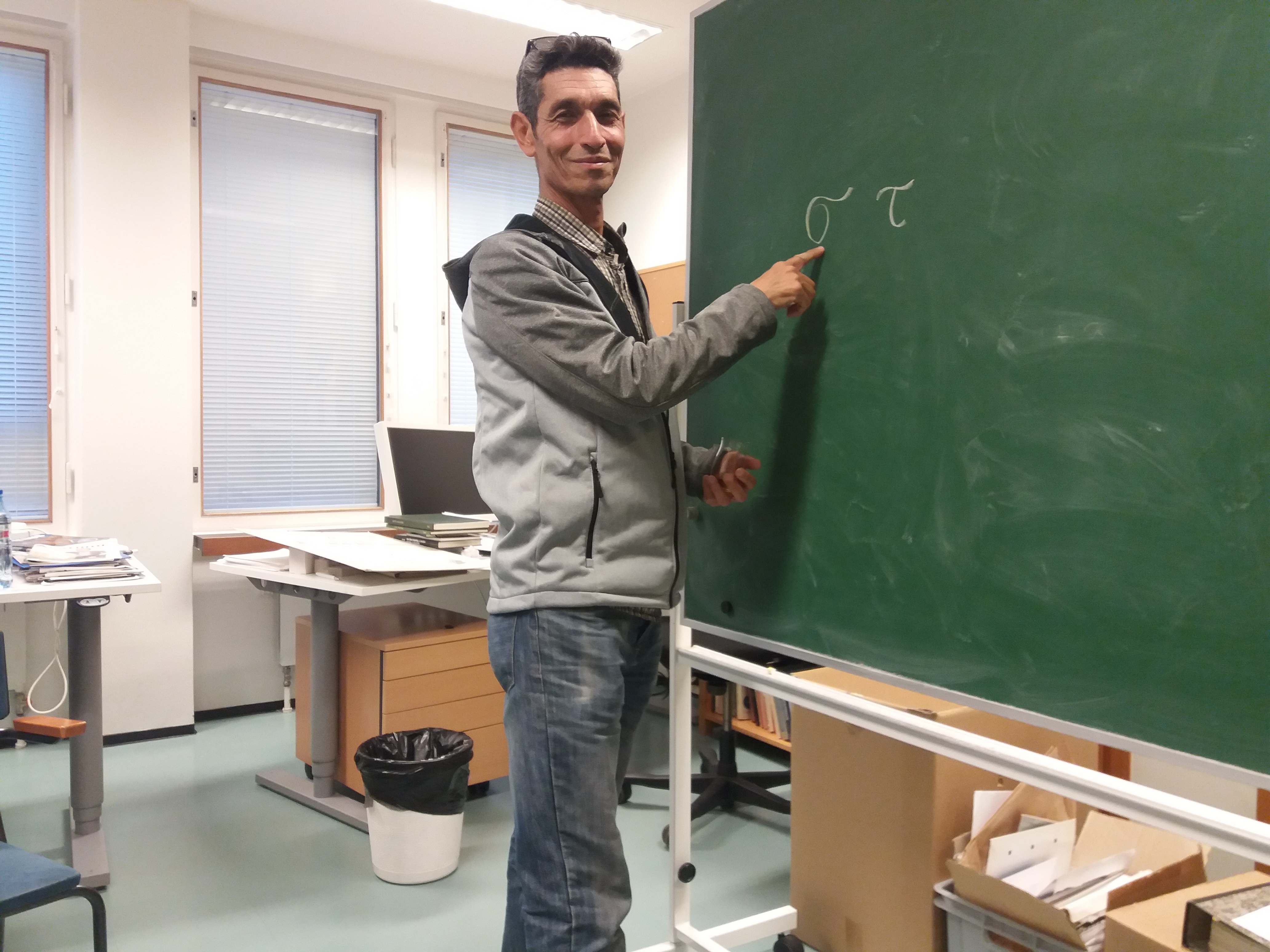
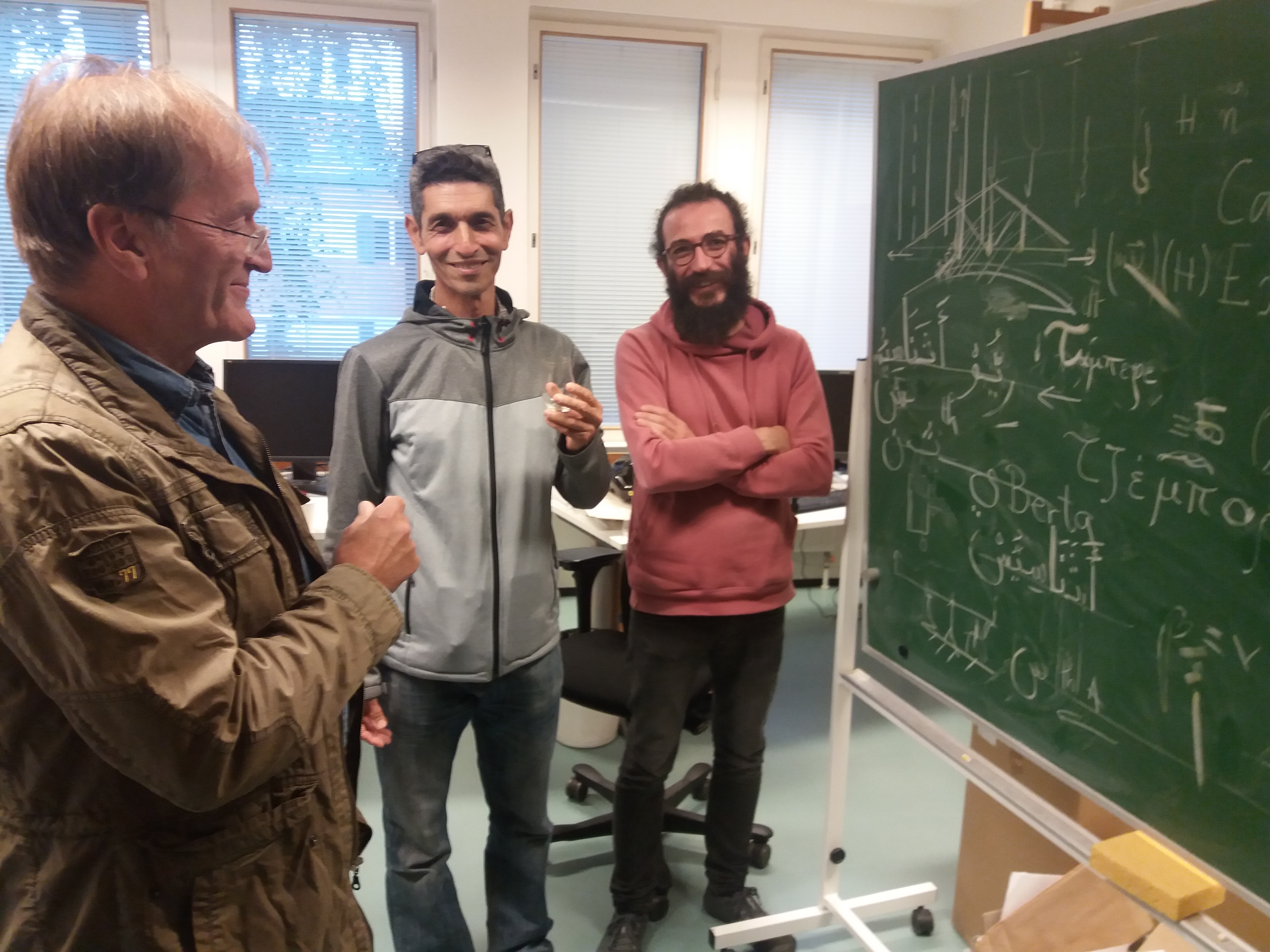
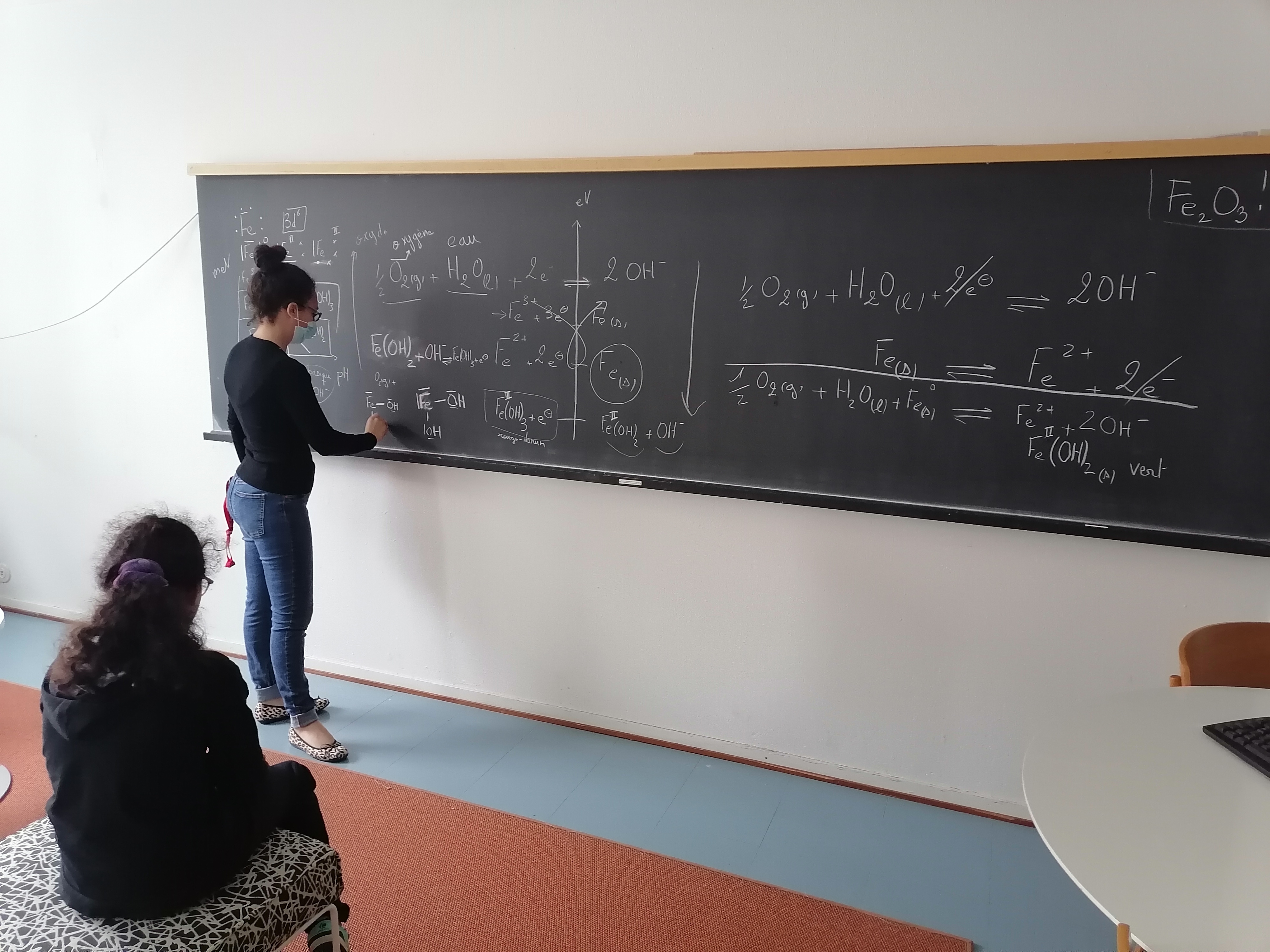
In Sinikka Djebar found an intellectual equal. Travelling abroad is not a problem with this family. Sinikka speaks ten different languages. She also knows LaTeX. Djebar once told me that Sinikka has started using LaTeX and after one week she knows it better than him. In their daughter Ilona I can see energy, inspiration and curiosity to reveal the secrets of nature, similar as in his dad. In addition you are an excellent drawer, as he also was. I would be more than happy if I could have the possibility to follow your path in future.
I knew Djebar for almost 38 years. We had a lot in common in our characters, however, we are also different in many ways, which was really crucial in the development of our thinking and deepening of our friendship. So, it could be said that it was a perfect match.
As for final words I would say -
Djebar’s wisdom will stay in our thinking, his attitude in our actions and his memory in our
hearts forever. Thank you dear friend for those fantastic moments that we got to spend
with you which enriched our lives. Thank you Djebar!
